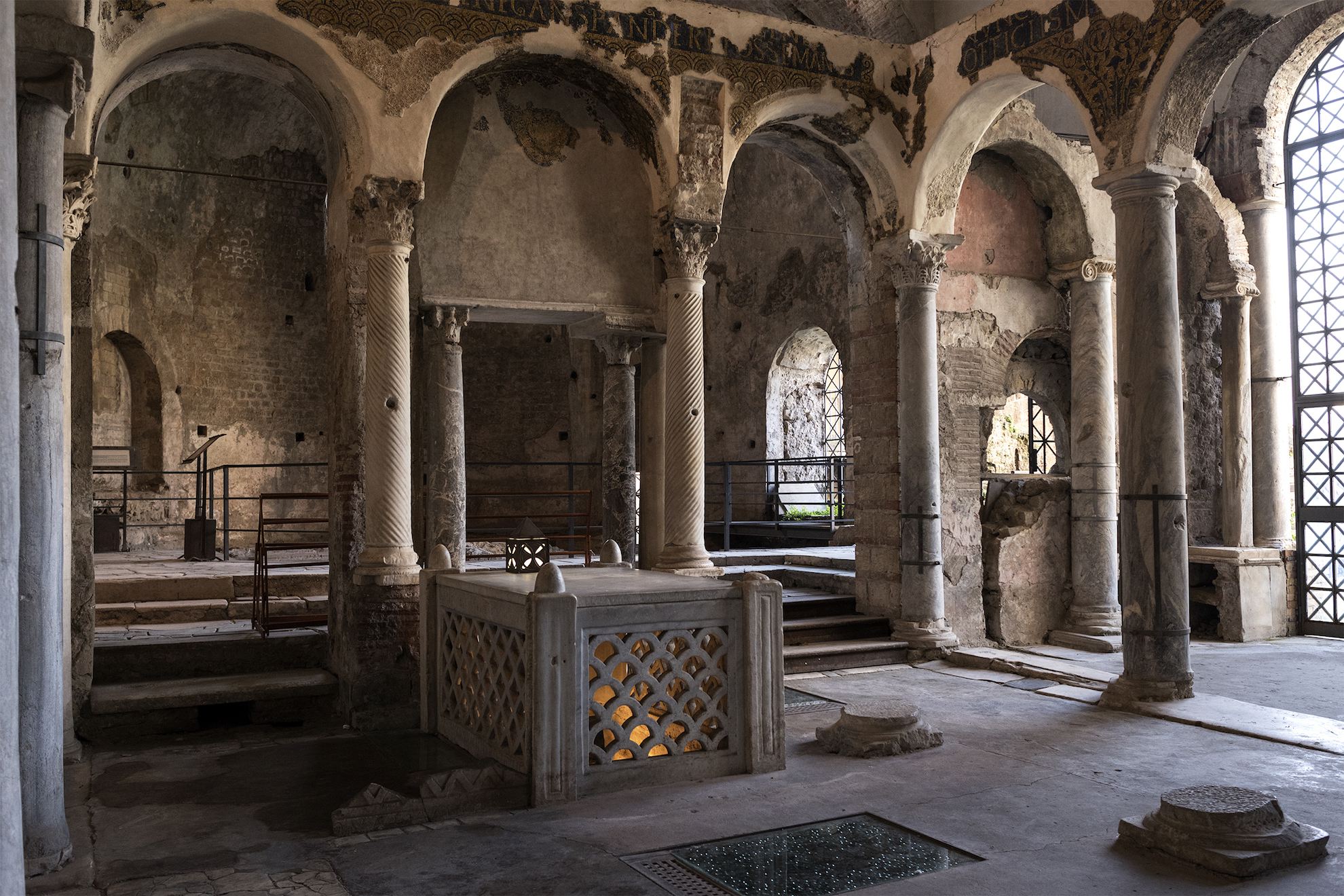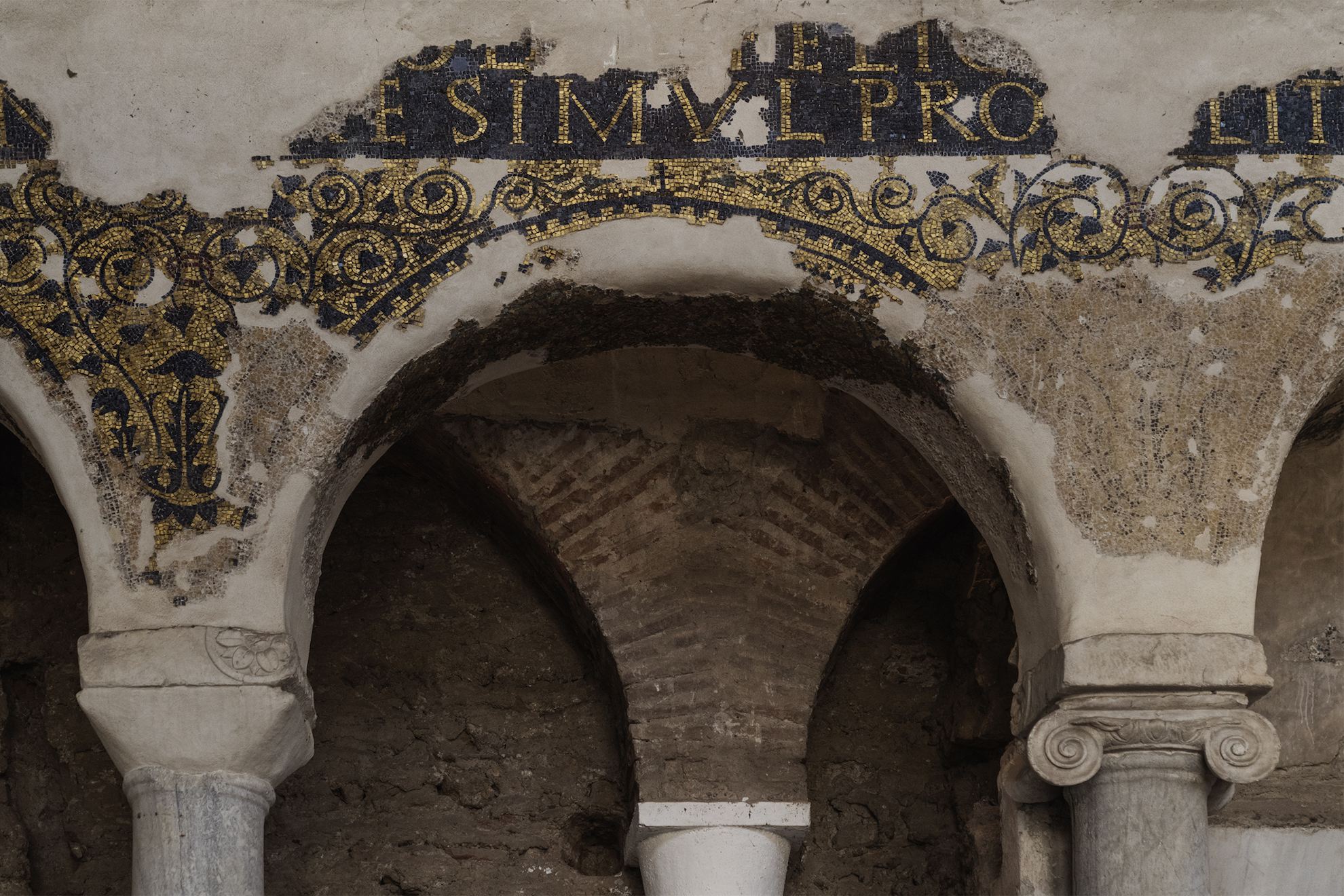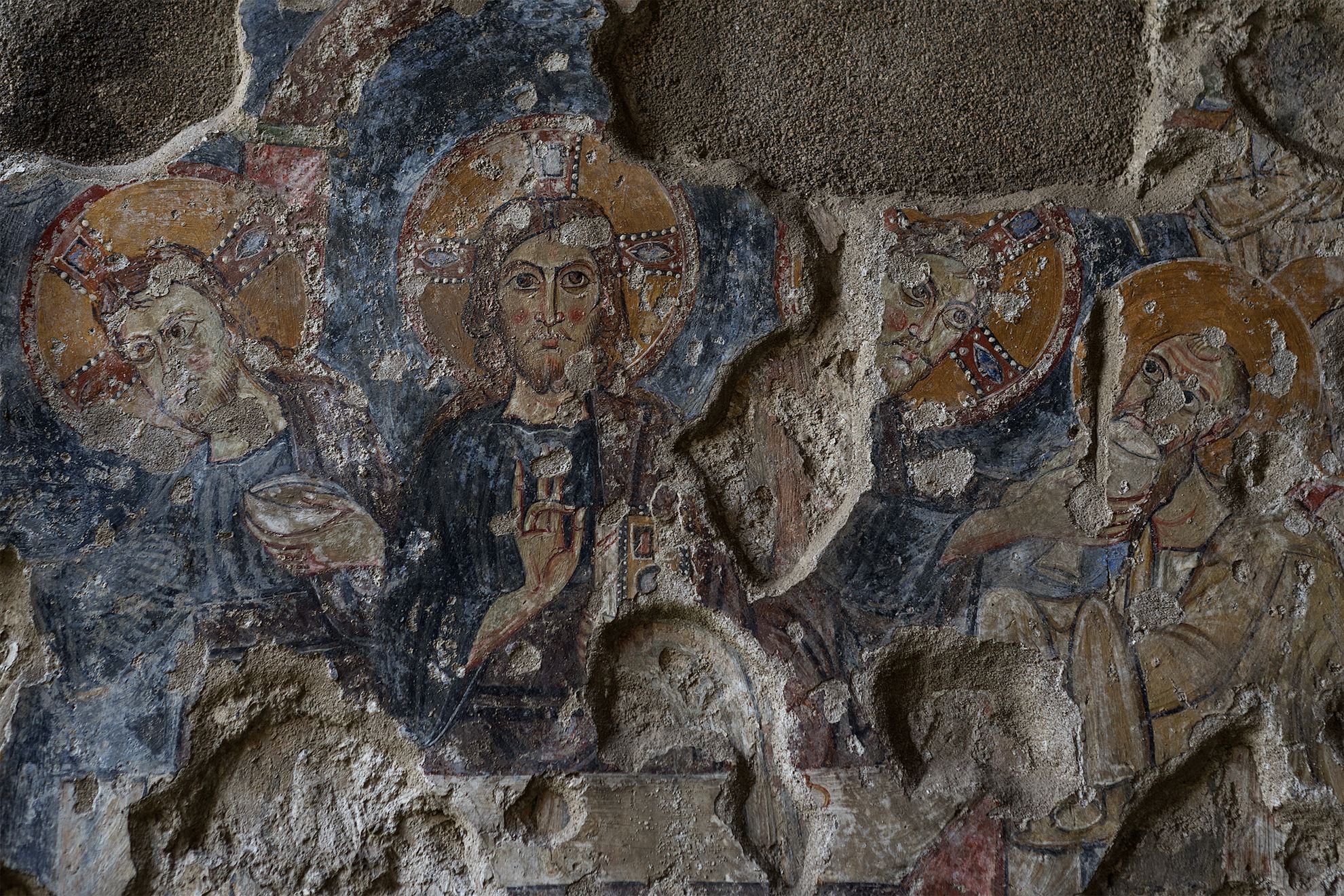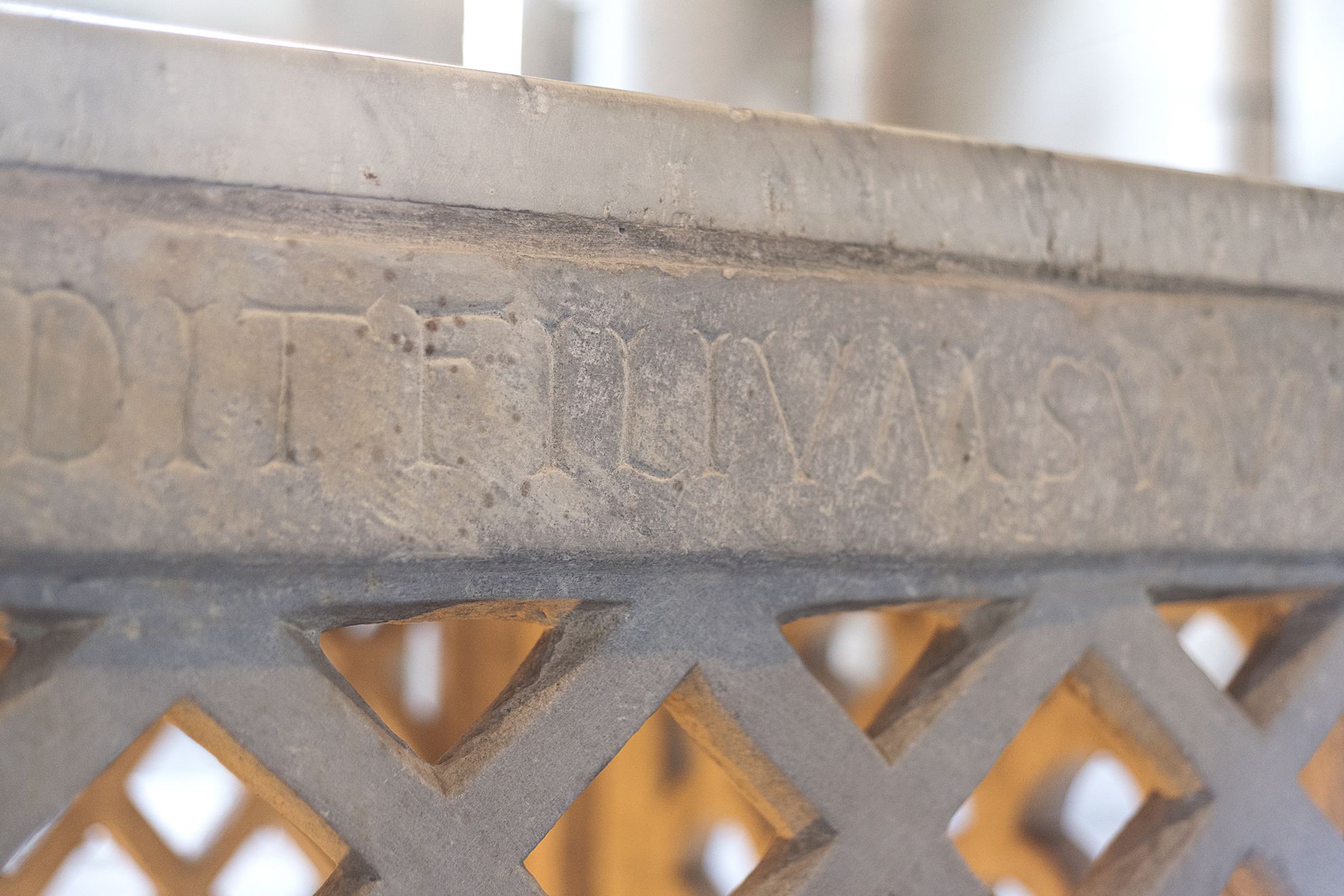In a countryside area, not far from Naples and important communication routes, there is a necropolis, first pagan and then Christian: we are at the end of the third century AD. Felice, a priest loved and appreciated by his contemporaries, is buried here. Thus began the history of the basilica of Cimitile, one of the most important sites for early Christian and medieval art in Italy.
La tomb of San Felice | Ph. Anna Monaco - Trentaremi

The tomb of San Felice is the fulcrum of this place, basilicas were built around it and also numerous tombs, it was perhaps the most desirable place to be buried. This type of burial, next to the body of a saint, was called ad sanctos, and it was believed it could guarantee particular protection for the deceased. Or at least this was the consolation for those who remained.
Detail of shrine with mosaics of the 6th century | Ph. Anna Monaco - Trentaremi

Scarpisasanti is the nickname of the people of Cimitile, because they walk on the land that houses the remains of numerous saints. Above all, San Felice. His history is a little different from that of the first Christians: it is full of persecutions, sacrifices for the faithfuls, but does not end with a violent death. For this reason he is defined as a martyr sine sanguine, that is: without blood.
10th century Eucharistic Trinity | Ph. Anna Monaco - Trentaremi

Another saint, Paolino, bishop of Nola, who lived in the 5th century, told us what happened after Felice’s death. Many pilgrims arrived at his tomb, prayed and wanted to keep a testimony of that special visit: for example, they brought nardo, a perfumed oil, which thanks to contact with the grave became a very useful medicine. To accommodate all these people larger spaces were needed, so a room was erected first, then a basilica, and then other ones, all oriented towards the tomb. Over the centuries it has been enriched with new decorations, with a shrine full of mosaics and marble barriers.
Detail of the tomb of San Felice | Ph. Anna Monaco - Trentaremi

Much of this is still visible in Cimitile: there are frescoes from distant eras that coexist on the same wall, mosaics with golden and deep blue tesserae, columns and walls that overlap, steps that hide burials. At first glance the eye is almost lost and the mind gets confused, you feel the need to put order in this mix of styles, materials and shapes. But stopping next to the tomb of San Felice, which was called ara veritatis by the faithfuls since no one could lie in his presence, everything seems to be clearer: the particularity of this place is given by its infinite details, fragments of a beauty that won the time.

